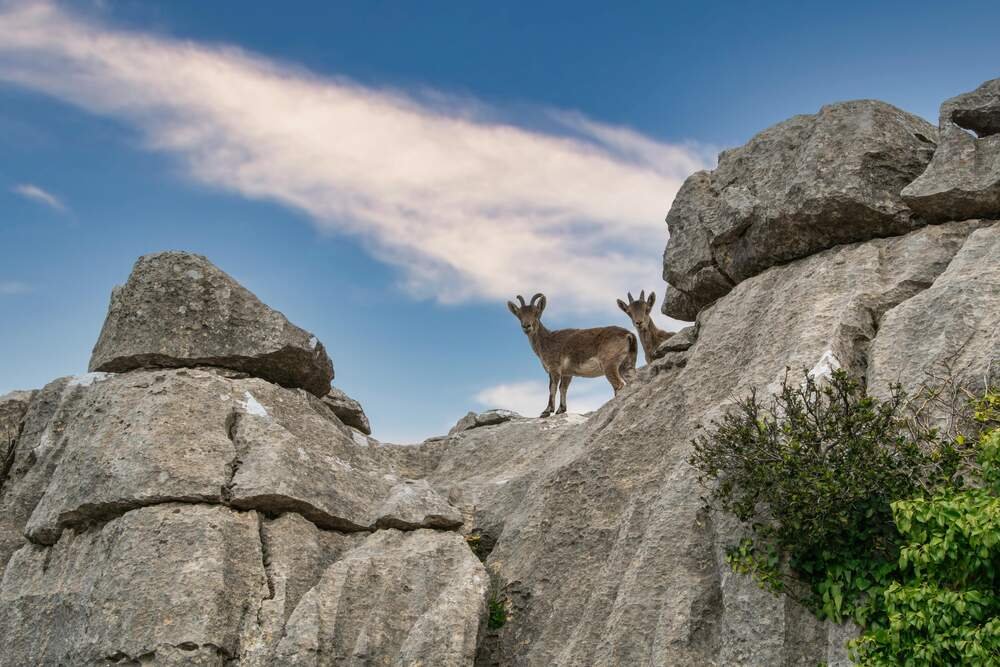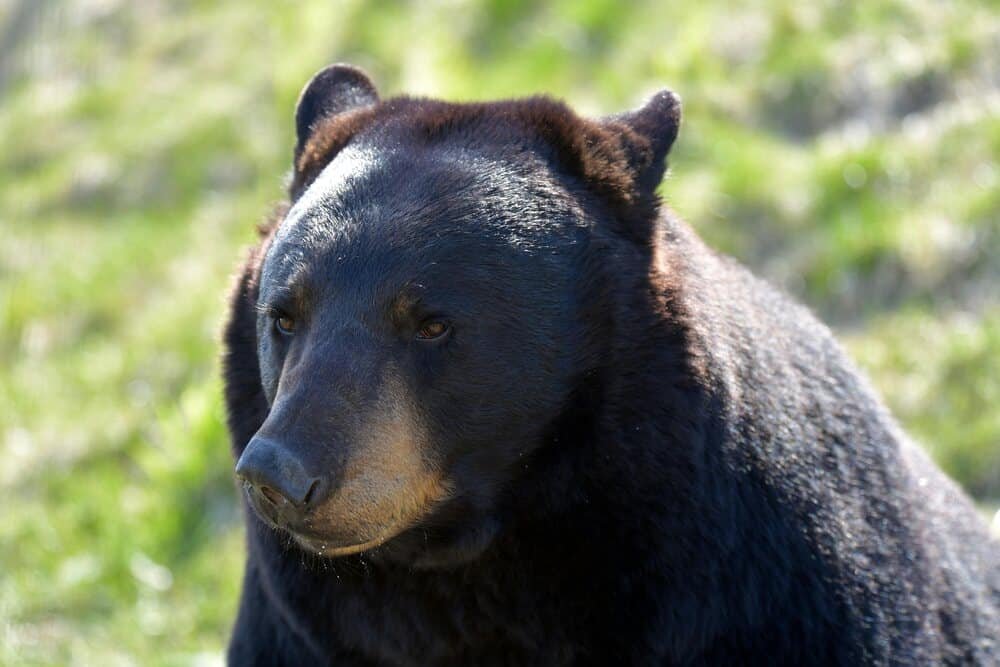Imagine you are walking on a tranquil trail. The sunlight flickering through the leaves, crisp air filling your lungs. Suddenly, you hear a sound and feel a shiver down your spine. You see a deer close by. While the encounter is exciting, it is also a reminder. When you venture into the wild you must understand and respect the creatures who live here.
To stay safe around local wildlife while camping, practice correct food storage and dispose of your waste properly, this way you’ll minimize attractants. Remain alert on trails, actually making some noise is beneficial to avoid surprising animals. Always respect wildlife by giving them ample space, never approach them. If you are unsure, retreat slowly and follow safety protocols for specific species.
However, you should be aware that wildlife encounters, even when taking precautions, can still occur. A study by Conover (2019) found the following:
Over 47,000 people annually in the United States sought medical attention after being attacked or bitten by wildlife, and approximately 8 people died annually. Most bites were by snakes, birds, rodents, and raccoons. (2019)
Animals face the challenges of habitat loss and competition for resources. Human-wildlife conflicts occur when our paths converge. Often we have gotten too close and our presence has had a negative effect on the animal. This article explores the need to foster a peaceful coexistence.
By learning about local wildlife and practicing responsible behavior, we can go a long way to ensuring a safe and enjoyable experience for ourselves and our animal friends.
Understanding Local Wildlife
Knowing what is out there is a good start. Here’s a glimpse of common wildlife you’ll find in different regions and countries.
North American Forests:
- Black Bear: They are big and have black fur, their ears are large and pointed. Confusingly they can be brown in color too. The general advice is to speak calmly and back away slowly if encountered.
- Moose: The moose is a huge herbivore with impressive antlers. Give them ample space and avoid approaching them directly. Attacks are rare, which is good. Sadly, they are more likely to collide with your car.
- Rattlesnake: The triangular head and of course its rattle tell you are dealing with a rattlesnake. Avoid tall grass and rocky places they might be hiding.
African Savanna
If you are lucky enough to be camping in Africa you’ll encounter these animals on safari.
- Lion: Easily recognizable by its beautiful golden fur and manes on the males. Respect designated viewing areas and stay in the vehicle when wildlife is present. They will eat you!
- Elephant: The biggest land animal. They have impressive tusks and gray wrinkled skin. Never approach a wild elephant. Stick to designated viewing areas.
- Zebra: This black and white striped herbivore usually hangs around in large herds. Enjoy them from afar because they are easily startled.
Southeast Asian Jungles
Camping in Southeast Asia is popular, but be aware of the local wildlife
- King Cobra: The highly venomous snake with its distinctive hood. Adhere to marked trails and avoid tall grass. Fortunately, it is a shy creature that wants to be left alone.
- Long-tailed macaque: These social monkeys are known for their playful behavior. Don’t feed them and keep your belongings secure.
- Wild Boar: It is a large, strong herbivore with significant tusks. Make noise while hiking to avoid surprising them.
Species Identification Tips:
Regional wildlife guide books are still readily available, they will enhance your ability to identify animals you may encounter. National Geographic has a good range of pocket guides to animals.
- Check Out Regional Wildlife Guidebooks: Field guides published by reputable organizations like National Geographic, The Audubon Society, or local wildlife conservation groups.
Remember: These resources are for educational purposes only. In case of uncertainty about an animal, prioritize safety and retreat slowly while following established protocols for specific species.
Strategies for general deterrence and safe coexistence
Knowing how to coexist peacefully with wildlife and deter encounters is key to a safe and enjoyable camping trip. Here, we’ll look at some general deterrence strategies. Remember, staying calm and following recommended protocols is vital when coming across wildlife.
General Deterrence Strategies:
Proper Food Storage: This is a must, store food items in bear-proof canisters. If the campsite provides lockers make sure you use them. Never leave food unattended or stored in your tent.
Make Noise While Hiking: Talking, singing, or clapping while hiking should alert animals to your presence and help avoid any surprise encounters.
Stay Alert and Aware: Pay close attention to your surroundings. Can you see any animal signs such as scat, tracks, or markings?
Don’t Leave Designated Trails: This will help minimize the chance of coming across wildlife in unexpected places.
Never Approach Wildlife: Many animals might look cute and docile but any wild animal can be unpredictable. Observe them from a safe distance and never feed or pet them.
Specifies-Specific Strategies:
Bear Encounter: According to the National Park Service you should identify yourself. By talking calmly the bear will recognize you are human and not prey. Stay calm (not easy). Remember most bears aren’t looking to attack you. If the bear is not moving you can move away slowly in a sideway fashion. Read this National Park Service article for an in depth approach to dealing with bears.
Snakes: If you notice a snake on a trail, stop, watch from a safe distance, and allow it to pass. Never attempt to handle a snake unless you are a professional. A wild snake won’t behave like a docile pet python. Read the USDA Forest Service leaflet for more details. In 2016 The CDC published statistics revealing 7000 people in the US had been injured or sickened by altercations with venomous snakes. Don’t be a statistic!
Remember: Always prioritize safety and follow park regulations. These strategies are a good start, but don’t be afraid to pick the brains of the staff at the campground.
Strategies for general deterrence and safe coexistence
Knowing how to coexist peacefully with wildlife and deter encounters is key to a safe and enjoyable camping trip. Here, we’ll look at some general deterrence strategies. Remember, staying calm and following recommended protocols is vital when coming across wildlife.
General Deterrence Strategies:
Proper Food Storage: This is a must, store food items in bear-proof canisters. If the campsite provides lockers make sure you use them. Never leave food unattended or stored in your tent.
Make Noise While Hiking: Talking, singing, or clapping while hiking should alert animals to your presence and help avoid any surprise encounters.
Stay Alert and Aware: Pay close attention to your surroundings. Can you see any animal signs such as scat, tracks, or markings?
Don’t Leave Designated Trails: This will help minimize the chance of coming across wildlife in unexpected places.
Never Approach Wildlife: Many animals might look cute and docile but any wild animal can be unpredictable. Observe them from a safe distance and never feed or pet them.
Specifies-Specific Strategies:
Bear Encounter: According to the National Park Service you should identify yourself. By talking calmly the bear will recognize you are human and not prey. Stay calm (not easy). Remember most bears aren’t looking to attack you. If the bear is not moving you can move away slowly in a sideway fashion. Read this National Park Service for an in depth approach to dealing with bears.
Snakes: If you notice a snake on a trail, stop, watch from a safe distance, and allow it to pass. Never attempt to handle a snake unless you are a professional. A wildsnake won’t behave like a docile pet python. Read the USDA Forest Service leaflet for more details. In 2016 The CDC published statistics revealing 7000 people in the US had been injured or sickened by altercations with venomous snakes. Don’t be a statistic!
Remember: Always prioritize safety and follow park regulations. These strategies are a good start, but don’t be afraid to pick the brains of the staff at the campground.

Be a Responsible Camper
Visiting the wild offers an incredible chance to connect with nature and see some incredible animals. However, it’s vital to remember we are guests in these habitats. Responsible outdoor recreation limits the impact we have on wildlife and creates a peaceful coexistence.
Leave No Trace Principles: The US framework “Leave No Trace” tells you everything you need to know to minimize the impact on the environment. They encourage correct waste disposal, how to minimize campfire use, and respect for wildlife. Follow these principles and future generations can enjoy the same beautiful wilderness.
Responsible Waste Disposal: You’ll end up attracting wildlife if you don’t store food correctly. The same with poor waste disposal. Food scraps, unfinished snacks, and dirty dishes can entice animals to come close to your campsite.
Reduce Animal Dependence on Human Food: Never feed the animals your leftovers. Animals that rely on human food sources will become less adept at finding their own natural food. This will impact their health and behavior
Minimize Negative Encounters: Wildlife attracted to campsites could create conflicts such as property damage or physical injuries.
Respecting Wildlife Boundaries: Wildlife have specific habitats and established territories. Disrupting their space will be stressful and lead to dangerous and unpredictable behavior.
Safety: Approaching wildlife too closely can trigger defensive behavior. You could be putting yourself, your family and the animal at risk.
By adhering to these principles we become stewards of the natural world. You’ll ensure a safe and enjoyable experience for everyone.
Conclusion
Encountering wildlife is a once in a lifetime opportunity. However, responsible behavior and knowledge of what you are dealing with is vital. You’ll ensure a safe and positive experience for you and the animals.
Before you set off on your next outdoor adventure, take some time to research the wildlife in your chosen destination. Familiarize yourself with best practices for safe wildlife encounters.
Reading and resources
For a deeper understanding of the potential dangers of wildlife encounters, you can explore resources like the National Park Service’s guide on ‘Wildlife Safety’: https://www.nps.gov/subjects/healthandsafety/wildlife.htm“
Moose Killed After Charging Two Hikers and a Dog Multiple Times” (https://thetrek.co/moose-killed-after-charging-two-hikers-and-a-dog-multiple-times-seriously-injuring-one/) (The Trek): This story details a backpacker’s encounter with a curious moose while camping solo in Grand Teton National Park. It highlights the importance of remaining calm and avoiding sudden movements when encountering large animals.
literature cited
Michael R. Conover, Jack H. Berryman Institute and Department of Wildland Resources, Utah State University, Logan, UT 84322-5210, USA [email protected]
Numbers of human fatalities, injuries, and illnesses in the United States due to wildlife


Pingback: Is Dispersed Camping in California Suitable for Beginners?
Pingback: Campground Etiquette: How to Be the Best Campsite Neighbor - novus places
Pingback: What comfort camping essentials do I need for a cozy trip?